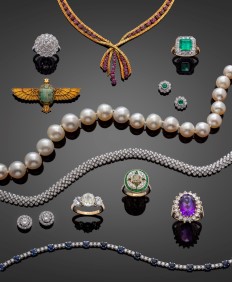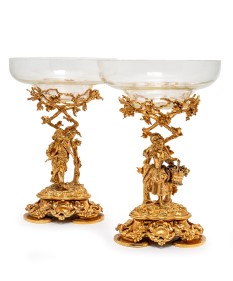The Beauty of small things: the art of the vinaigrette
Exquisite craftsmanship, aesthetics, and the practicalities of life combine in tiny little boxes we call vinaigrettes. These boxes, some designed as novelties, all open to reveal a perforated grille which held a perfumed medium within.
Usually of sterling silver and gilded to the interiors, they served quite practical purposes. Worn around the neck, put in a pocket or hung from a chatelaine, their size and portability allowed perfumes to be carried with ease when travelling.
They were too, the perfect antidote to the less than sanitary conditions encountered on the streets. Not only could the wealthy disguise such odours with their strongly aromatic vinaigrettes, they could, hopefully, allay the diseases that these 'smells' were thought to carry. Heady aromatics were also put to good use during the Victorian times, when a tightly laced woman may have required a dose of reviving vapours.
Its predecessors were the pomander and the pouncet or essence box, which have their origins in Tudor times. The origin of the name, vinaigrette, is probably self explanatory - sponges dipped in aromatics or perfumes were dissolved in vinegar. The interior gilding was necessary as gold unlike silver, does not react to acidity. But this manufacturing necessity makes for a lovely surprise - not only is the little box a thing of beauty, but the interior gilded grille with its usually refined intricate scrollwork and foliate designs provides just as much delight. This astonishing workmanship is hidden, only for the pleasure of the user.
In the eighteenth and early 19th century century, both men and women carried vinaigrettes, but it became a peculiarly female accessory during Victorian times. The 'art' of the vinaigrette reached its zenith during the Regency period but use gradually waned as the century progressed. We do see it employed however in double-ended scent bottles, with one end containing the liquid scent, the other, the aromatics.
Our Objets de Vertu section contains a fine selection of these treasures: novelties include, a 'handbag' with a wirework handle, Lot 149, an 1819 strapped 'satchel', Lot 156a, and an 1823 ornamented 'pocket watch' vinaigrette, Lot 151.
Lot 157, an 1800 made octagonal box is typical of early examples with simple bright cut details and a punched grille. In contrast, Lot 155, an 1822 cast top vinaigrette by Edwin James illustrates the artform at its finest, an example of remarkable craftsmanship with exquisite engine turning, fine casting and decoration. While serving a practical purpose, this jewel-like piece and the expensive perfume within it would most certainly have expressed the wealth and status of its owner.



